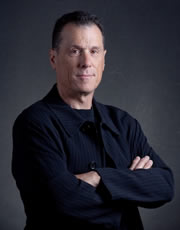 Art School curriculum, unlike (or perhaps similar to) the curriculum of other disciplines, necessarily needs to constantly regenerate so as to avoid ossification. As artists invent new ways of communicating ideas and new techniques for doing so, institutions charged with the educational piece of an artist’s training must continue to rethink which trends and traditions are given space in and increasingly crowded historical index of art practices. That is a big responsibility and one that art institutions do not take lightly. As we move closer to our upcoming NASAD (National Association of Schools of At and Design) accreditation review these things loom large for us in the Art Department.
Art School curriculum, unlike (or perhaps similar to) the curriculum of other disciplines, necessarily needs to constantly regenerate so as to avoid ossification. As artists invent new ways of communicating ideas and new techniques for doing so, institutions charged with the educational piece of an artist’s training must continue to rethink which trends and traditions are given space in and increasingly crowded historical index of art practices. That is a big responsibility and one that art institutions do not take lightly. As we move closer to our upcoming NASAD (National Association of Schools of At and Design) accreditation review these things loom large for us in the Art Department.
How we teach and talk about art in general has changed drastically in the new millennium. Art discourse has absorbed public discourse to a degree and we see that in how we value community practices, social justice, outreach, cultural sensitivity, and other contemporary topics into our understanding of art in the current era. We also apply such metrics retroactively as we look back at historical models and re-think them given what we know in the present. Much of this has to do with our contemporary desire to be present in a particular discourse; to really see and hear others within a given conversation or critique or to process an exhibition with an understanding of the artist’s intentionality.
And much of this revolves around a particular kind of looking. How do we look at anything? What do we see when we interact with the world and how do we process those images that come hurtling into our consciousness whether we want them to or not? What is the difference between looking and seeing? Seeing is passive. When you open your eyes in the morning, seeing happens involuntarily; the mechanics of your optical functions kick in and images flood into your brain. The alarm clock, the chair, the door, the window, and outside, trees, or cars. Immediately our brains begin to index these things, to note them though without much editorialization. There are things in my field of vision, one is as important as the other which is to say that none of them are particularly important. They exist.
Looking, in contrast, implies some sort of effort: it is active as opposed to passive; I am looking for my wallet, looking for love, looking for a new car… or, I am looking at something; looking at a picture or a menu or a person. When we walk through a museum for instance, we see all that is in our field of vision, again passively but it registers in our consciousness at some level. At some point we might make a bit more effort, make a conscious decision to stop in front of a work of art and begin to really look at it, to bore into the thingness of it. In that gesture, the gesture of looking, we acknowledge that this experience has value; not necessarily that it is good or bad, just that there is some level of value that is compelling enough to alter our route just a bit and focus our gaze on one thing rather than another. It is at that point that we go from passively seeing to actively looking; from a state in which everything around us is more or less entering our consciousness equally to a state in which we are beginning to exercise discernment.
Thinking about what we teach and how we teach it requires us to decide what is in our field of vision and what is outside of that field and to contemplate the consequences of inclusion and by extension, exclusion. There are consequences related to both what we leave out and what we leave in, and ultimately those decisions will frame the discourse of art for years to come. But such decisions are becoming increasingly unavoidable for institutions dedicated to the teaching of art.
Douglas Rosenberg
